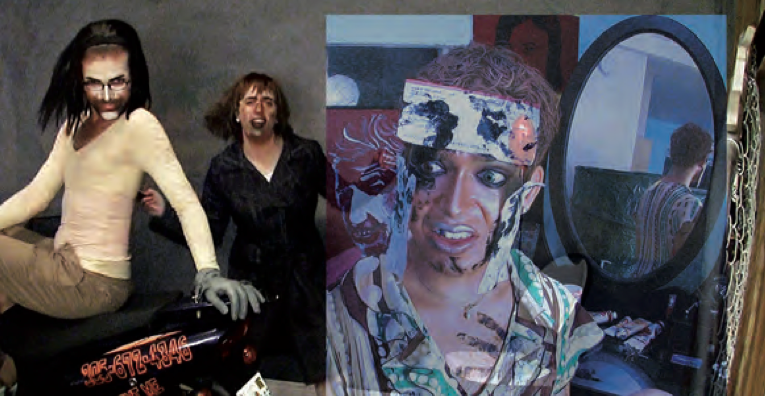
- Source: FLASH ART
- Author: Aimee Walleston
- Date: MAY/JUNE 2011
- Format: PRINT
Ryan Trecartin

RYAN TRECARTIN, Ready (Re’Search Wait’S), 2009-2010. Video still. Courtesy Elizabeth Dee, New York.
“Ryan is so ahead, Ryan is so fast, that I sometimes think that the past and the future collapse into the speed of stillness in his work.” Speaking about the work of Ryan Trecartin, Klaus Biesenbach, Director of MoMA PS1, hints at not only what makes the artist a barometer of contemporary success, but also what makes Trecartin, who turns 30 this year, like no other young artist — producing manically paced videos with characters and narratives that encapsulate l’air du temps of current Western culture in all its insistent, schizophrenic exhibitionism. Two larger-scale exhibitions of his most recent series, a seven-piece film series titled “Any Ever” (2008-2010), will be on view simultaneously this summer, at MoMA PS1 and MOCA Miami (the exhibition began at The Power Plant in Toronto).
As with almost all of Trecartin’s work, the movies from “Any Ever” — which are imbued with a psychoactive narrative that explores careerism and market research, to name just a few themes — exist, in some form, online, which elicits the question of how a traveling museum exhibition allows these pieces to be born anew. “When a viewer navigates the movies online, the frame of the computer imposes itself on the actual reading of the works’ content,” says Trecartin. “In the museum setting, it’s an opportunity for us to create a much more poetic frame.” At PS1, the artist will collaborate once again with artist Lizzie Fitch (she is also a prominent performer in the films) to create “sculptural theaters.” As the artist says, they “are almost like a package for the person to sit inside of and experience the movies. It’s a frame that the person inhabits, and it creates a hum with the information that’s in the movies.”
As Trecartin first became widely known only five years ago (acquainted to many at the 2006 Whitney Biennial), these exhibitions almost seem like mid-career mini-retrospectives, mirroring the accelerated growth that seems to have determined the velocity of his career. Instead of distilling information to its finer points and alchemizing it into artistic product, Trecartin’s explorations convert information into logarithms; on his watch, the constant assault of image and advertising faced by contemporary humanity becomes even more complicated and cross-sectioned, not less. Trecartin’s dialogue contains a degree of social critique: In Roamie View: History Enchantment (from the four-film cycle Re’Search Wait’S), 2009-10, a character played by Trecartin evaluates a work of art by stating: “It’s about how there once was a time when cute people had to do very real things to make their situation work out.” Presumably, we are no longer existing in that time, and Trecartin acknowledges this by casting, in another film within the series (The Re’Search), many young actors from Orlando’s dollar-and-a-dream gene pool of Disney child-star hopefuls. In future works, Trecartin hopes to spread even more tendrils into popular culture, including the possible use of reality television stars. “I want people to be attracted to riding the movies on the first read,” says Trecartin adding, “Inserting handles of accessibility, is something I push purposefully.”
Any Ever was filmed over the course of two years in Miami, which makes its homecoming this summer significant. “In Miami, we were living in the sets that we were making. There were really no personal items in the house, just art movie props,”says Trecartin. “All the rooms were being repainted, transformed and redressed weekly. It was a strange two years of living in a state of concentrated prop, set and script.” The works highlight and mirror the changing face of Miami, which over the past ten years has added the identity of an art playground to its discursive character. “It was incredible to see what Trecartin produced in Miami over this time period, and how the house he used also transformed and adapted,” says MOCA’s Ruba Katrib. “I often drive by the house and can’t help but wonder if the people who live there now have any idea what took place there before.”

